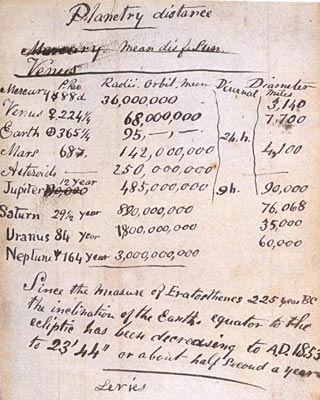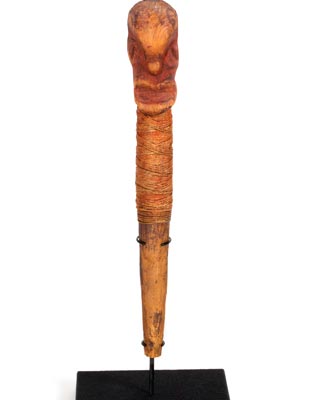As soon as Pakeha contact became more regular through whaling and sealing gangs, Māori quickly saw the value in new technology. In particular, whaling boats soon replaced the traditional waka as a means of travel and transportation. New trade routes developed replacing coastal tracks and inland tribes relocated to coastal areas. Often colonisation is seen as having a negative impact on traditional knowledge systems, yet this is a passive view that denies Māori the intellectual capacity to engage. From the 1860s, tribal elders were pursuing new knowledge and technologies while simultaneously recording and preserving traditional beliefs for their descendants.

From Planets to Gods

Page demonstrating an awareness of the Ancient Greek Mathematician Eratosthenes.
Tom Green’s notebook.
Christchurch, University of Canterbury, Macmillan Brown Library, Ngāi Tahu Archives, M 22 (c. 1860s)
The University of Canterbury is well known for its links to famous figures such as Ernest, Lord Rutherford and Sir Karl Popper. Of equal importance, but much less known, are its links to indigenous knowledge systems. These are preserved in the Ngāi Tahu Archives and exemplified in the work of Tame Eutahi Kirini (known as Tom Green). Green’s notebook, compiled in the 1860s, is striking not only for its author’s efforts to explore Ancient Greek ideas and the latest discoveries of western science, but for his attempts to relate them to Māori knowledge systems. In this particular example, Green considers the implications of the Ancient Greek mathematician Eratosthenes’ thought on planetary distances.
Whakapakoko atua (godsticks) were employed by tohunga, (learned experts), as mediums of communication with particular atua, (traditional gods). Tohunga would invoke an atua to abide within the whakapakoko atua for the duration of whichever ritual he was performing. Tribal records tell us that the whakapakoko atua were invoked during rituals that saw them smeared with the blood of a sacrificed animal or victim, giving it its own ‘life’ or ‘mauri’. When not in use these artefacts were still regarded as tapu and were kept in an area known as the ‘Mua’ which we now call, waahi tapu – ‘sacred sites’.
Want to know more?
Te Maire Tau 'Indigenous Knowledge Systems: Tom Green's Notebook', in Treasures of the University of Canterbury Library, ed. by Chris Jones & Bronwyn Matthews with Jennifer Clement (Christchurch: CUP, 2011)

Taumata atua or god stick, iwi as yet unknown
Canterbury Museum, E149.171